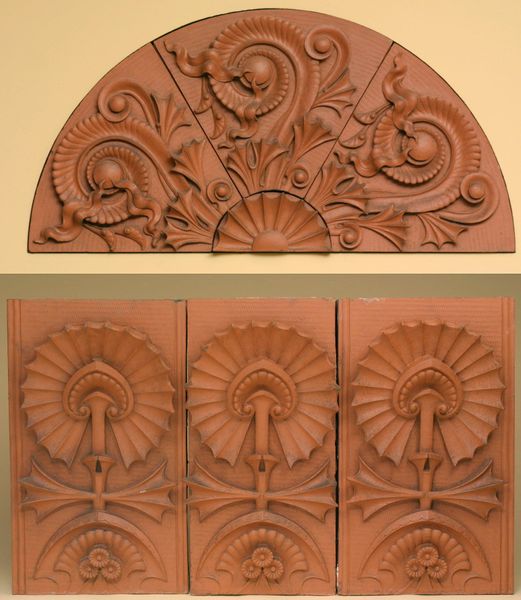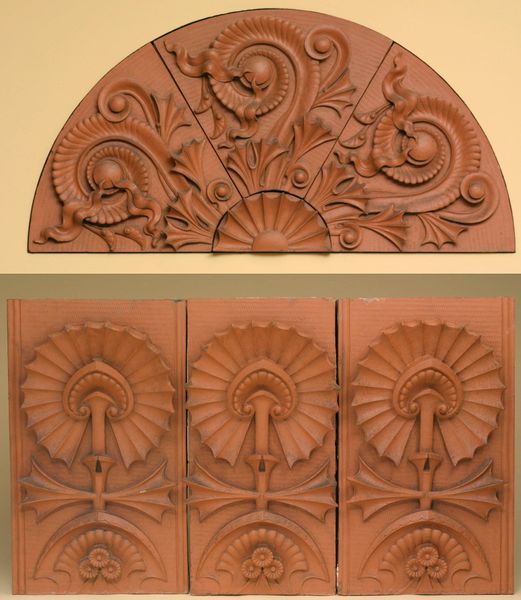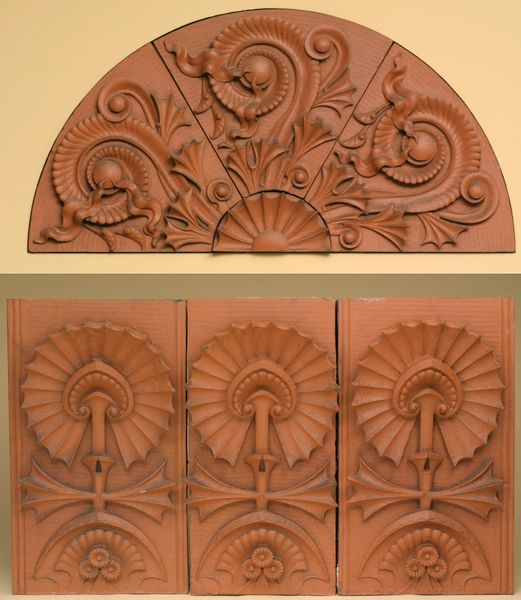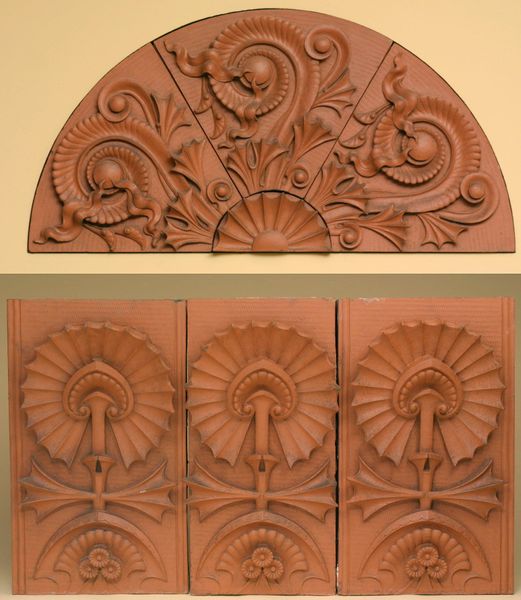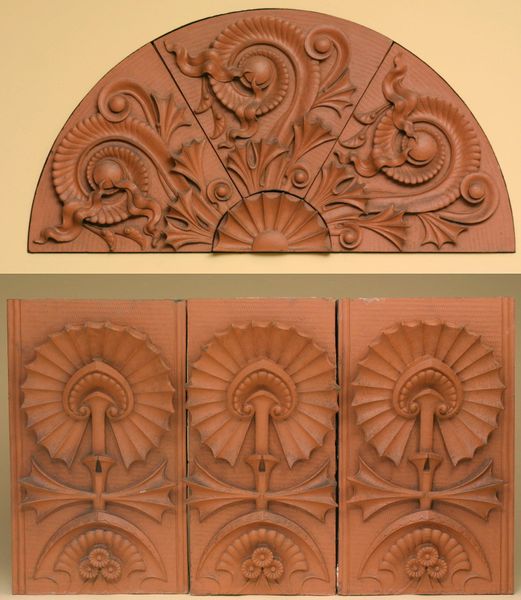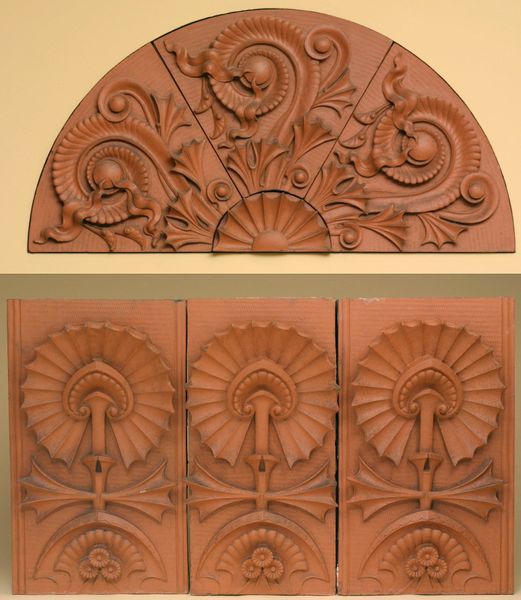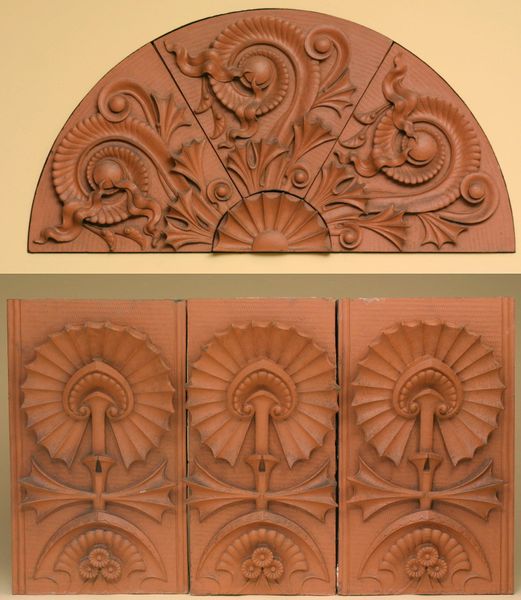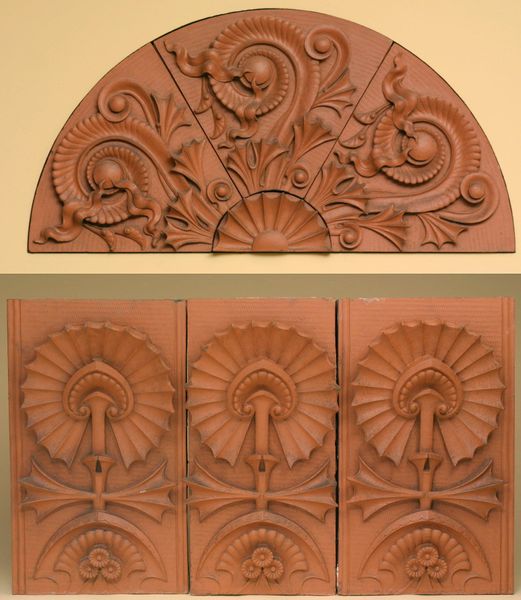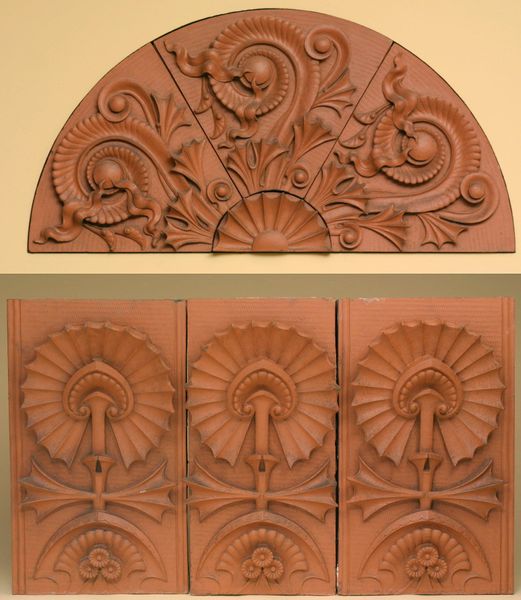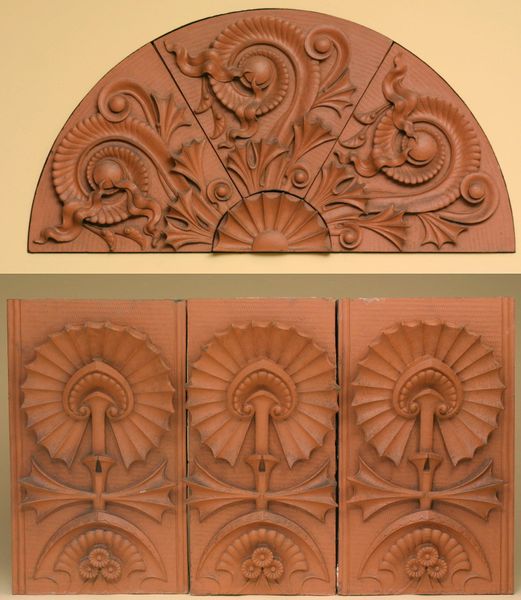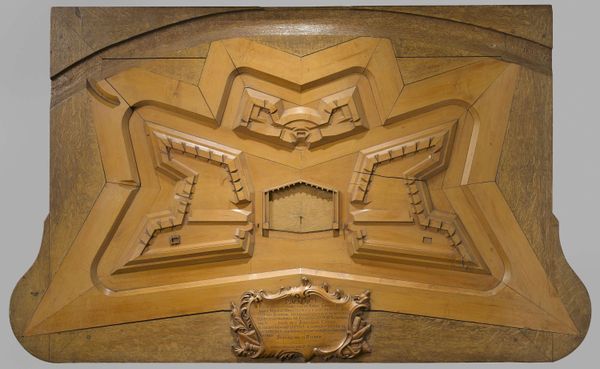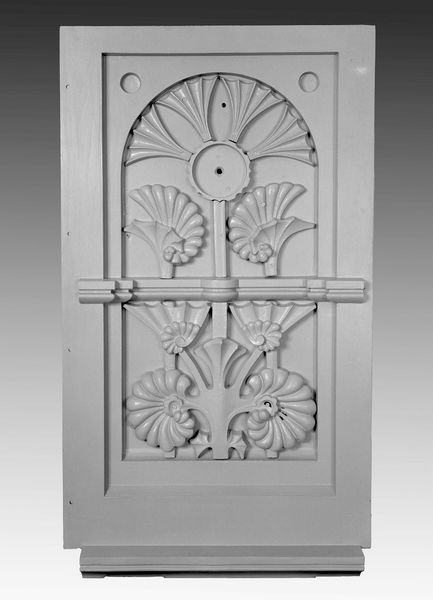
ornament, relief, terracotta, architecture
#
ornament
#
relief
#
geometric pattern
#
traditional architecture
#
geometric
#
united-states
#
terracotta
#
architecture
Copyright: Public Domain
These terracotta *Lunette and decorative panel* were created by Louis Henri Sullivan, though the date is unknown. Terracotta, meaning "baked earth," starts as humble clay, but through firing, becomes a durable material, perfect for architectural ornamentation. Sullivan’s choice of terracotta reflects its growing popularity at the turn of the century for embellishing buildings. It's relatively inexpensive, and capable of being molded into intricate designs, thus offering a way to add flair without the expense of carved stone. Consider the repeating patterns: these panels were likely produced in multiples using molds, showcasing the industrial aspect of architectural production during Sullivan's time. This enabled mass production, bringing ornamentation to a wider audience. Yet, the designs retain Sullivan's artistic flair, blurring the lines between industrial production and artistic expression. These panels remind us of the social context in which they were created, and how craft, design, and materiality intersect to enrich our understanding of art.
Comments
minneapolisinstituteofart about 2 years ago
⋮
Louis Sullivan designed these terracotta panels for the exterior of the Scoville Building in Chicago, one of the Adler and Sullivan firm's earliest commissions. It required them to remodel an existing Adler structure to accord with a new, much larger addition. The terracotta pieces shown here formed part of the organic decoration of stylized plants with which Sullivan tied the two buildings together. This lunette ornamented the arch above the windows of the top (fifth) story. It has an undulating design of ferns unfurling and would have complemented other organically-inspired terracotta pieces throughout the exterior.
Join the conversation
Join millions of artists and users on Artera today and experience the ultimate creative platform.

